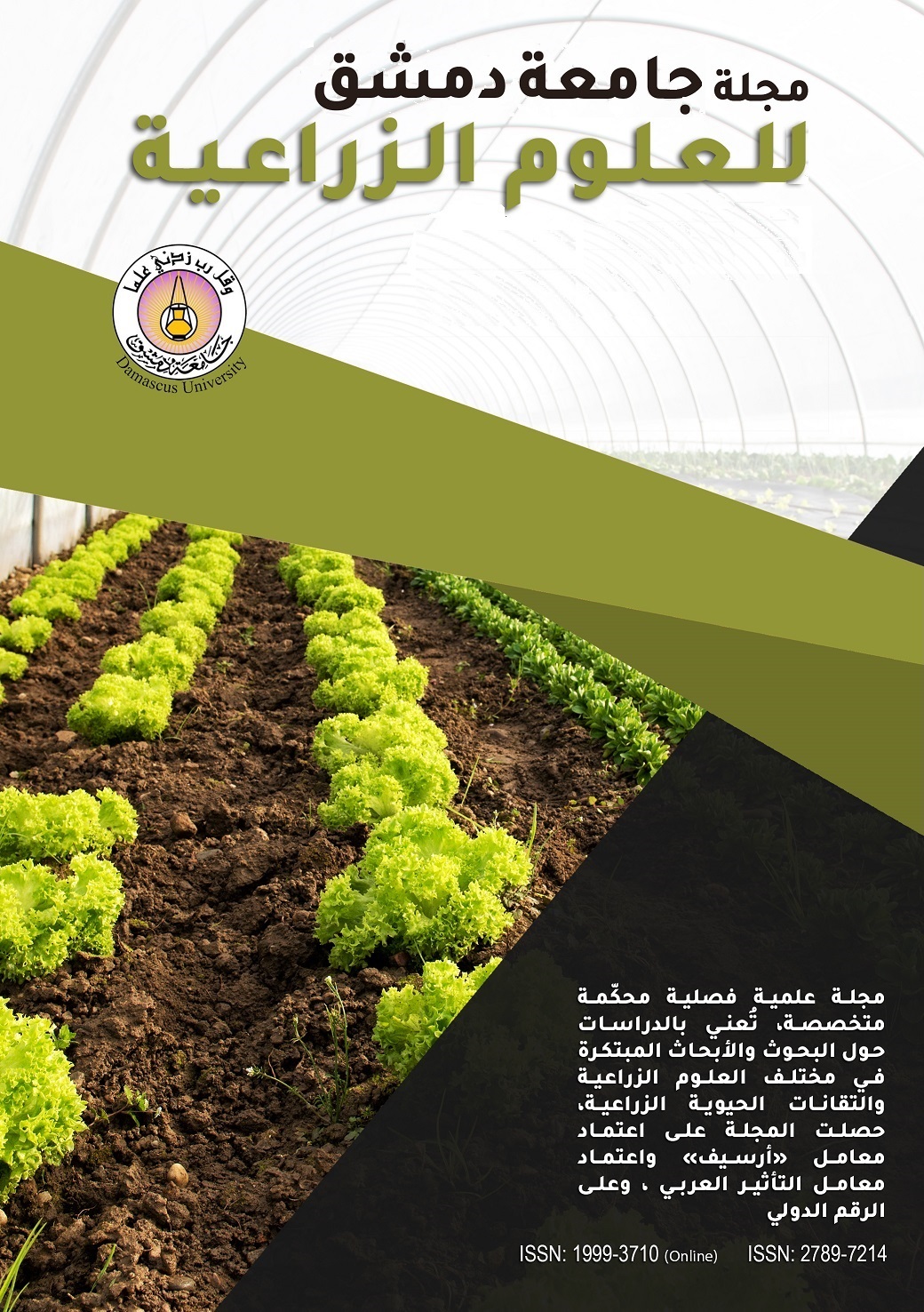Effect of Osmotic and Salinity Stress on allus Growth and Some Biochemical Traits in Catharanthus roseus L.
Keywords:
Abiotic stresses, MDA, Proline, Anti-oxidant enzymes, Membrane integrityAbstract
The experiment was carried out in the Syrian National Commission of Biotechnology, to study the effect of osmotic and salinity stress on the callus growth and the activity of some antioxidant enzymes and some biochemical traits in Catharanthus roseus. The experiments was laid according to complete random desgin (CRD) with three replications. Seeds were sterilized by NaOCl solution (0.5% v/v), then planted on MS medium. Plantlets were transferred to MS medium enriched with NAA (1 mg L-1) and BA (2 mg L-1). The callus was initiated from leaves using MS medium containing NAA (1 mg L-1) and KIN (2 mg L-1). Callus then was transferred to MS medium supplemented with different concentrations of PEG-6000 (-0.2, -0.3, -0.4 MPa), and NaCl (25, 50, 75, 100 mM) in succession as stimulating agents. The results showed that the fresh and dry weight of callus were significantly lower in the salinity stress treatment 100 mM, and in osmotic stress treatment -0.4 Mpa (3.047, 0.250; 2.35, 0.18 g respectively), while it was significantly higher in the non-stressed (control) treatment (6.207, 0.483 g respectively). The solutes leakage was significantly higher under salt and osmotic stress conditions (28.04 and 26.98% respectively) compared with the control (8.563%). MDA content was significantly higher under salt stress (102.3 µmol.g-1 FW) followed by the osmotic stress treatment (79.41 µmol.g-1 FW), while it was significantly lower in the control (37.76 µmol.g-1 FW). The proline content showed a remarkable increase in both the stress treatments (4.623, 4.243 mmol.g-1 FW respectively) compared with the control (2.477 mmol.g-1 FW). The activity of antioxidant enzymes (CAT, APX, and SOD) was significantly higher under salt stress treatment (506.9, 12270.02 mol.min-1.mg-1 protein, 191.4 U.mg-1 protein respectively), followed by osmotic stress (259.4, 7106.22 mol.min-1.mg-1 protein, 65.60 U.mg-1 protein respectively), while it was significantly lower in the control treatment (126.9, 1800.38 mol.min-1.mg-1 protein, 36.03 U.mg-1 protein respectively.

